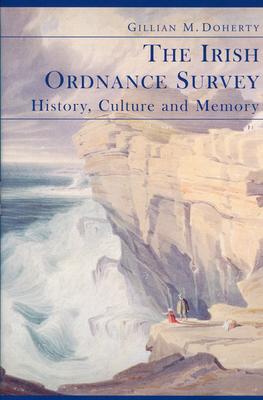The Irish Ordnance Survey
Roy Johnston reviews The Irish Ordnance Survey: history, culture and memory by Gillian M Doherty, Four Courts Press 2004; ISBN 1-85182-861-3, £40, 45 euros hbk

MANY OF us have been aware of the importance of the Ordnance Survey (initiated 1824) as a pioneering scientific enterprise, and training ground for many who subsequently became famous in the sciences (Tyndall being perhaps typical in this context). Few however are aware of the role of the Survey in social and historical scholarship, though hints of this emerge in works such as Brian Friel's Translations.
The Survey engineers were accompanied by a group of roving scholars: historians, topographers, linguists, genealogists, who recorded what came to be known as the Memoirs. Only one of these sets of local memoirs, the one relating to the parish of Templemore in Derry, was ever published . This was widely welcomed, and created something of a political stir, to the extent that while the collection of the memoirs continued, their subsequent publication was suppressed. They remain however in the National Archive, and this book is an overview of the material, the tip of the iceberg.
Colonel Thomas Colby, the overall Director of the British Ordnance Survey, appointed Captain Thomas Larcom the Director of the Survey in Ireland, with a view to providing "...a foundation for statistical, antiquarian and geological surveys..." .
Larcom produced enlightened and comprehensive guidelines, his Heads of Inquiry being basically a manual for field workers. Among the latter were people with knowledge of Irish who were able to contribute to the understanding of the place names, one being John O'Donovan. George Petrie later became associated, producing papers for the Royal Irish Academy based on the memoirs which were emerging.
The topographical and genealogical work had to be defended against allegations of 'Popery and Monkery' from the Orange lobby, and Irish MPs were lobbied, with the aid of 'improving landlords' such as Adare and the TCD librarian Henthorn Todd, both of whom were associated with the movement to educate the landed gentry in the Irish language, the better to understand their tenants.
Thus the Survey project was seen by the emergent liberal intelligentsia as part of the Enlightenment movement, a step in the direction of the future good government of Ireland, based on an objective assessment of the nation's physical, human and cultural resources. It was however seen by the many of the ascendancy as a threat, whence he suppression of the publication of the Memoirs, many of which tended to focus on the local perceptions of the dispossessions of the 1640s and 1690s. Most of the book expands on this aspect.
The topographical work was centred in George Petrie's house in Dublin ('Teepetrie'), where he used to meet with John O'Donovan and an extended group which included James Clarence Mangan the poet as well as Eugene O'Curry, Patrick O'Keefe, Thomas O'Conor and others. They grappled as best they could with variations in place-name pronunciations from native and settler sources. They perceived themselves as gatherers of the raw material for 'scientific history' in the Enlightenment tradition, as pioneered by Leopold von Ranke (1795-1886), and taken on board by Larcom and Petrie.
In this context many manuscript records were discovered, in the possession of descendants of dispossessed aristocracy; these have usually ended up in the Academy, forming the core of its collection: "...O'Donovan told Larcom how ancient manuscripts that once belonged to Ireland's literate elite were now damaged by damp and dust and rotted in the sooty cabins of their wretched descendants...".
Folklore was collected and recorded; archaeological relics were discovered, laying the foundation for modern archaeology; myths were demolished (like for example Vallencey and his association of round towers with fire-worship and oriental influences). The boundaries of ancient tuatha were established, from local lore. The high civilised status of early mediaeval Ireland, prior to the Viking invasions, was firmly established. Echoes of this were taken up in the Nation by Thomas Davis.
Much evidence emerges about the dynamics of language shift and its motivations in pre-famine times, as expressed in family and place names, in various socio-economic contexts. I quote:
"..Memoir research on Irish language, literature and folklore was part of a large scholarly effort to recreate Irish-language culture in English, to make it available to English speakers, Anglo-Irish gentry in particular, and to promote it as the basis of a unified, non-sectarian, non-political Irish identity..'. Petrie, supported by other prominent Protestant intellectuals, '..sought to foster a national identity that was Irish, Protestant and Unionist...'.
Lurking in the background however are the 'underground gentry' as documented by Kevin Whelan in his study of the dispossessed Catholic aristocracy, whose leading role remains embedded in local popular memory. The final chapter explores this in some depth, giving some insights into the bitterness of the current northern situation, where focused on land ownership.
Altogether this is an important pioneering work, which will be a trigger for much more research into the complex historical roots of Irish nationality.
Connolly Association, c/o RMT, Unity House, 39 Chalton Street, London, NW1 1JD
Copyright © 2005 Roy Johnston

